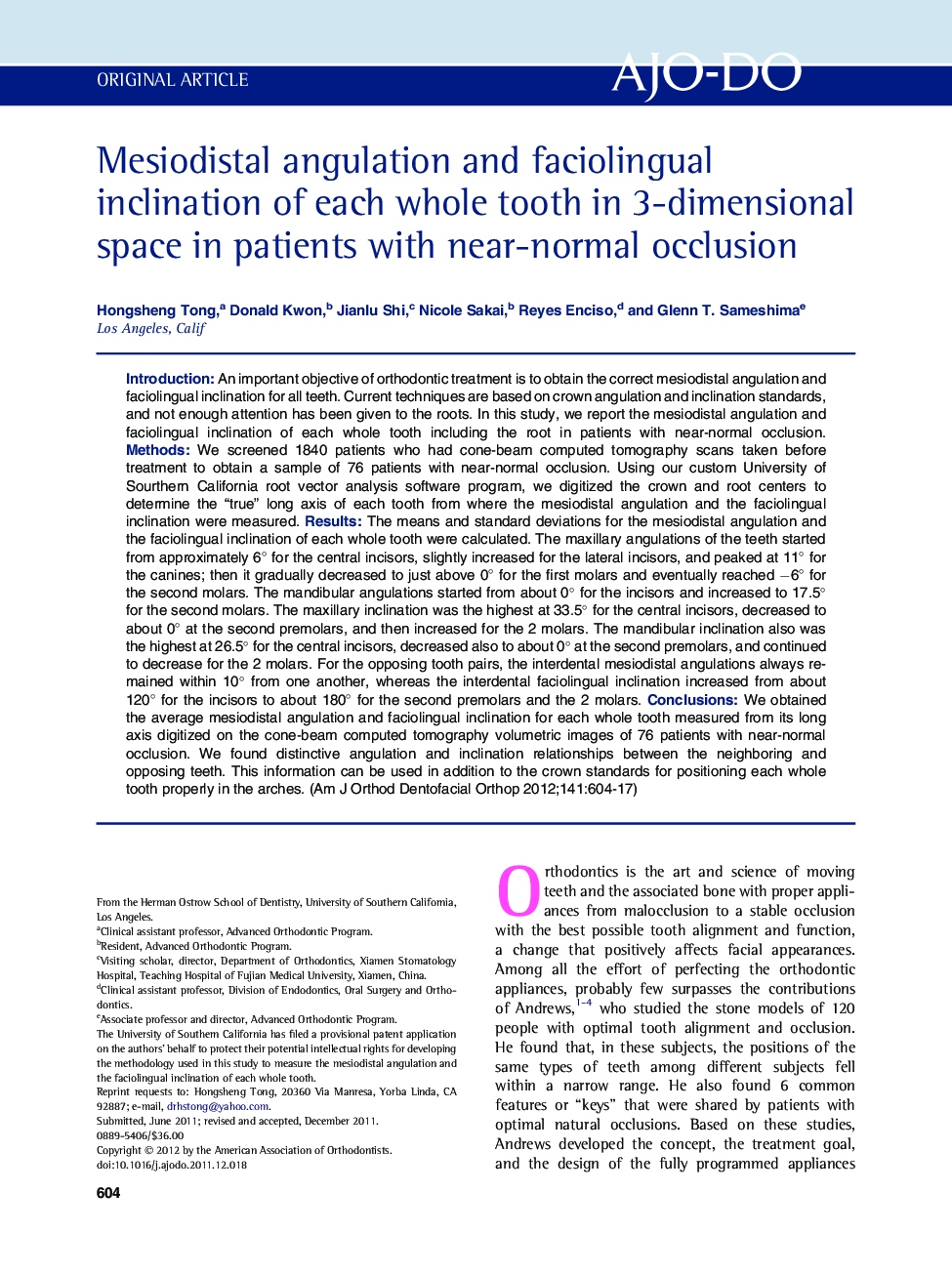| Article ID | Journal | Published Year | Pages | File Type |
|---|---|---|---|---|
| 3116988 | American Journal of Orthodontics and Dentofacial Orthopedics | 2012 | 14 Pages |
IntroductionAn important objective of orthodontic treatment is to obtain the correct mesiodistal angulation and faciolingual inclination for all teeth. Current techniques are based on crown angulation and inclination standards, and not enough attention has been given to the roots. In this study, we report the mesiodistal angulation and faciolingual inclination of each whole tooth including the root in patients with near-normal occlusion.MethodsWe screened 1840 patients who had cone-beam computed tomography scans taken before treatment to obtain a sample of 76 patients with near-normal occlusion. Using our custom University of Sourthern California root vector analysis software program, we digitized the crown and root centers to determine the “true” long axis of each tooth from where the mesiodistal angulation and the faciolingual inclination were measured.ResultsThe means and standard deviations for the mesiodistal angulation and the faciolingual inclination of each whole tooth were calculated. The maxillary angulations of the teeth started from approximately 6° for the central incisors, slightly increased for the lateral incisors, and peaked at 11° for the canines; then it gradually decreased to just above 0° for the first molars and eventually reached −6° for the second molars. The mandibular angulations started from about 0° for the incisors and increased to 17.5° for the second molars. The maxillary inclination was the highest at 33.5° for the central incisors, decreased to about 0° at the second premolars, and then increased for the 2 molars. The mandibular inclination also was the highest at 26.5° for the central incisors, decreased also to about 0° at the second premolars, and continued to decrease for the 2 molars. For the opposing tooth pairs, the interdental mesiodistal angulations always remained within 10° from one another, whereas the interdental faciolingual inclination increased from about 120° for the incisors to about 180° for the second premolars and the 2 molars.ConclusionsWe obtained the average mesiodistal angulation and faciolingual inclination for each whole tooth measured from its long axis digitized on the cone-beam computed tomography volumetric images of 76 patients with near-normal occlusion. We found distinctive angulation and inclination relationships between the neighboring and opposing teeth. This information can be used in addition to the crown standards for positioning each whole tooth properly in the arches.
